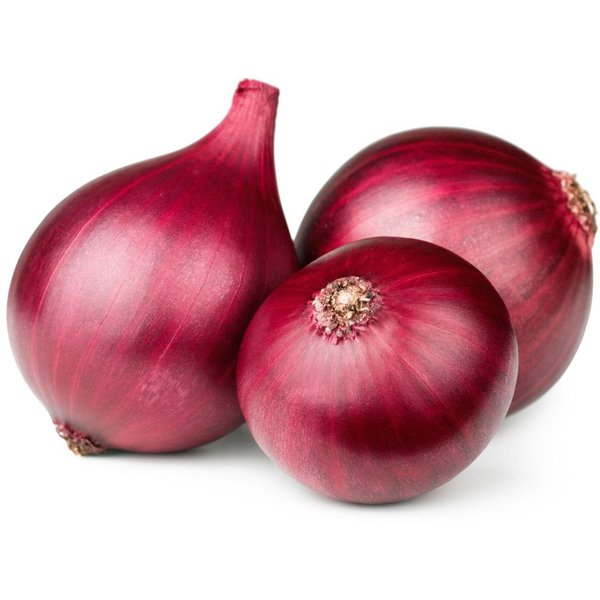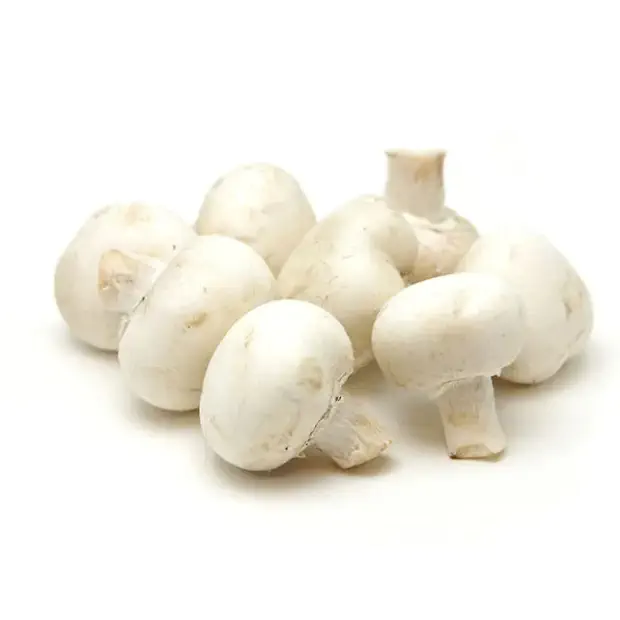Your nose is more powerful than you think. It can detect around 50,000 different scents.
Imagine walking into a garden. You can smell the roses, the fresh-cut grass, and even the damp earth. Each scent tells a story. This incredible ability of your nose is due to thousands of receptors working together. Our sense of smell plays a key role in our daily lives, from enjoying food to sensing danger.
It’s an amazing tool, often taken for granted. Let’s explore how this works and why it’s so important. Dive in to discover the fascinating world of scents your nose can detect.

Credit: www.facebook.com
Introduction To The Olfactory System
Have you ever wondered how you can smell a delicious meal cooking from another room? Or why some scents can bring back memories? The answer lies in your olfactory system. This system is your body’s way of detecting and interpreting smells. It is a fascinating and complex part of your body that can recognize thousands of different scents.
Basics Of Smell
Your sense of smell starts with your nose. When you breathe in, air carrying tiny scent particles enters your nostrils. These particles travel up into the nasal cavity, where they come into contact with the olfactory epithelium. This is a fancy term for the special tissue inside your nose responsible for detecting smells.
Here’s a simple breakdown of the process:
- First, scent particles enter your nose.
- Next, they reach the olfactory epithelium.
- This tissue has sensory receptors that detect different smells.
- The receptors send signals to your brain.
- Your brain interprets these signals as specific scents.
Isn’t it amazing how your body can pick up on so many different smells with such a small part of your body?
Role Of The Nose
Your nose does more than just hold your glasses in place. It is a key player in your sense of smell. Each nostril contains hundreds of olfactory receptors. These receptors are like little locks waiting for the right key. When a scent particle fits into one of these locks, it triggers a signal to your brain.
Fun fact: Did you know that your nose can detect over 50,000 different scents? That’s right! From the fresh smell of rain to the mouth-watering aroma of freshly baked bread, your nose is constantly working to identify and interpret the world of smells around you.
Another interesting point is the role of your nose in taste. Ever notice how food tastes bland when you have a cold? That’s because your sense of smell greatly impacts your sense of taste. Your nose and mouth work together to create the full flavor experience.
The olfactory system is an incredible part of your body. It helps you enjoy the many smells and flavors of life. Next time you catch a whiff of your favorite scent, take a moment to appreciate the hard work of your nose and the olfactory system.
The Anatomy Of Smell
Our sense of smell is an amazing ability. The human nose can detect around 50,000 different scents. But how does this happen? Let’s dive into the fascinating world of the Anatomy of Smell and understand the science behind our noses. Ready to sniff out some knowledge?
Olfactory Bulb
The olfactory bulb is a key player in our smelling process. Located at the bottom of the brain, it acts like a traffic controller. When you sniff something, the scent travels to the olfactory bulb. Here, the bulb processes the scent signals and sends them to other parts of the brain. This is where the magic happens, turning a simple sniff into a recognition of a familiar smell, like freshly baked cookies or blooming flowers.
Imagine the olfactory bulb as a super smart filter. It sorts through the scents quickly, deciding which ones are important. It’s like a librarian who knows exactly where each book belongs.
Nasal Passages
The journey of a scent starts in your nasal passages. These are the pathways inside your nose. When you inhale, air flows through these passages, carrying scent molecules with it. These molecules then reach the olfactory receptors, which are tiny sensors inside the nasal cavity.
Think of the nasal passages as a highway for smells. The air traffic is constant, carrying different scents every second. From the aroma of morning coffee to the whiff of rain-soaked earth, your nasal passages are always at work.
| Part of Anatomy | Function |
|---|---|
| Olfactory Bulb | Processes and filters scent signals |
| Nasal Passages | Pathway for scent molecules |
- Olfactory bulb sorts through scents.
- Nasal passages carry scent molecules.
- Inhale air through nasal passages.
- Scent molecules reach olfactory receptors.
- Olfactory bulb processes and sends signals to brain.
So, the next time you catch a scent, remember the incredible journey it’s taking inside your nose. It’s a complex yet beautiful process, making every sniff a moment of connection with the world around you.
How Smell Works
The sense of smell is a fascinating and complex process. Your nose can identify up to 50,000 different scents. Understanding how smell works can help you appreciate this incredible ability.
Odor Detection
Odor detection starts in your nose. Tiny molecules from objects enter your nostrils. These molecules dissolve in the mucus lining of your nasal cavity. Specialized cells, called olfactory receptors, detect these molecules. Humans have around 400 types of olfactory receptors. Each receptor type is sensitive to different odor molecules.
Signal Transmission
Once an odor molecule binds to a receptor, a signal is sent. This signal travels through the olfactory nerve. The olfactory nerve connects your nose to your brain. The signal reaches the olfactory bulb in your brain. The olfactory bulb processes the signal and identifies the scent. The brain then interprets the scent, linking it to memory and emotion.

Credit: www.thegoodbody.com
The Science Of Scent Recognition
Did you know your nose can recognize up to 50,000 different scents? Incredible, right? The science behind how we detect and identify these scents is fascinating. Our sense of smell involves a complex system that works quietly and efficiently. Let’s dive deeper and understand how scent receptors and brain processing make this magic happen.
Scent Receptors
Think of scent receptors as tiny gatekeepers inside your nose. These receptors are special cells that detect different smells. Here’s a fun fact: humans have about 400 different types of scent receptors! These receptors are located in the olfactory epithelium, a small patch of tissue inside the nasal cavity.
- Each receptor type is tuned to specific molecules in the air.
- When you inhale, these molecules bind to the receptors.
- This binding action generates a signal, which is then sent to the brain.
Imagine these receptors like a lock and key. Only the right scent molecule (key) can fit into the receptor (lock), triggering the signal. This process is quick and happens every time you take a breath!
Brain Processing
Once the signal from the scent receptors reaches the brain, the real magic begins. The brain processes these signals in the olfactory bulb, located just above the nasal cavity.
The olfactory bulb acts like a sorting center:
- It receives signals from the receptors.
- It interprets these signals to identify the scent.
- It sends this information to other brain areas for further processing.
This information travels to the limbic system, which is responsible for emotions and memory. Ever wondered why certain scents bring back old memories or make you feel a certain way? That’s your limbic system at work!
So next time you smell freshly baked cookies or a blooming flower, remember the incredible journey that scent took from your nose to your brain. It’s a marvel of biology, making our world richer and more vibrant.
Factors Affecting Sense Of Smell
Our sense of smell is quite incredible. Did you know your nose can detect around 50,000 different scents? But what affects this powerful sense? It turns out, several factors can influence how well we sniff out smells. Let’s dive into two key areas: genetic factors and environmental influences.
Genetic Factors
Genetics play a big role in how well we can smell. Some people are born with a super sense of smell, while others might struggle to detect certain scents. Why is that? It’s all in the genes!
Here are some interesting points:
- Some people have more olfactory receptors, which means they can detect more smells.
- Certain genetic mutations can enhance or reduce our sense of smell.
- In some families, a strong sense of smell can be passed down through generations.
Imagine it like this: if your parents have a keen sense of smell, there’s a good chance you will too. It’s just like how you might inherit your mom’s blue eyes or your dad’s curly hair.
Environmental Influences
The environment around us also affects our sense of smell. Think about it—if you grow up in a bakery, you’ll likely recognize the smell of fresh bread better than someone who hasn’t. Here are some environmental factors that can make a difference:
| Factor | Impact |
|---|---|
| Pollution | Can damage olfactory receptors, reducing the ability to smell. |
| Smoking | Also harms the nose’s ability to pick up scents. |
| Diet | Spicy or aromatic foods can enhance your sense of smell over time. |
Ever notice how everything smells stronger after a rain? That’s because moisture in the air helps scents travel better. It’s fascinating how our surroundings shape our sense of smell!
In conclusion, both genetics and the environment play a part in how we experience smells. Whether you’re a scent super-star or someone who needs a little help identifying that mystery aroma, it’s all part of what makes our noses so amazing!
Smell And Memory
The human sense of smell is powerful. It can detect over 50,000 scents. This remarkable ability connects directly to our memory. Smells often trigger vivid memories from our past. This connection between smell and memory is fascinating.
Olfactory Memory
Our sense of smell is closely linked to the brain’s memory center. The olfactory bulb processes smells and is near the hippocampus. The hippocampus is crucial for forming memories. This proximity helps create strong scent-memories.
For example, the smell of fresh cookies might remind you of childhood. Similarly, a certain perfume may recall a loved one. This is olfactory memory at work. It makes scents powerful triggers for past experiences.
Emotional Connections
Smells don’t just trigger memories. They evoke emotions too. The amygdala is another brain region involved. It’s responsible for emotional responses. The olfactory bulb’s closeness to the amygdala creates strong emotional reactions to smells.
Imagine the scent of a pine tree. It might make you feel peaceful and happy. Or the smell of rain might make you feel nostalgic. These emotional connections enhance the power of scents. They make our experiences with smells deeply personal.
Smell Disorders
The human nose can detect around 50,000 different scents. This ability plays a crucial role in our daily lives. Unfortunately, some people suffer from smell disorders. These disorders can affect the way they experience the world. Let’s explore two common smell disorders: anosmia and hyposmia.
Anosmia
Anosmia is the complete loss of the sense of smell. Imagine not being able to smell fresh flowers or your favorite meal. Life can feel less vibrant and enjoyable. Anosmia can be temporary or permanent. It can result from a cold, sinus infection, or head injury. Some people are born with it, while others develop it later in life.
Hyposmia
Hyposmia is a reduced ability to smell. You might still detect scents, but they are faint. This condition can make it hard to enjoy the full flavor of foods. Hyposmia can be caused by allergies, nasal polyps, or aging. It can also be a symptom of neurological diseases. Treatments include medications, surgery, or addressing the underlying cause.
Advancements In Olfactory Research
Imagine walking into a bakery and being able to identify not just the smell of bread, but also the subtle hints of each ingredient. Olfactory research has come a long way, and our understanding of the sense of smell is evolving rapidly. Let’s dive into the exciting advancements in this field and see how technology is making strides in understanding our noses better.
Technological Innovations
Technology is transforming the way we study the sense of smell. With advanced tools, researchers can now analyze scents at a molecular level. One of the most exciting innovations is the electronic nose, or e-nose. This device mimics the human nose and can detect and recognize different odors. Imagine a machine that can sniff out diseases or even help chefs perfect their recipes!
- Electronic Nose: A sensor array that mimics human olfaction.
- Gas Chromatography: Separates and analyzes compounds in a mixture.
- Mass Spectrometry: Measures the masses within a sample.
These tools are not only precise but also incredibly fast, allowing researchers to gather vast amounts of data in a short time. It’s like having a superpower to smell thousands of scents at once!
Future Directions
So, where do we go from here? The future of olfactory research is as exciting as a mystery novel. Scientists are exploring how to use scent to diagnose diseases early. Imagine if your doctor could catch an illness by simply having you breathe into a device. This could revolutionize healthcare.
Moreover, researchers are working on creating artificial scents. This could change industries like perfumery and food flavoring. You could have a perfume that adapts to your mood or a flavor enhancer that makes vegetables taste like chocolate. Sounds like sci-fi, right?
| Future Application | Impact |
|---|---|
| Medical Diagnosis | Early detection of diseases |
| Artificial Scents | Customized perfumes and flavors |
In conclusion, the advancements in olfactory research are opening up a world of possibilities. From detecting diseases to creating new scents, the future is bright and full of intriguing scents. So next time you take a whiff of your favorite smell, remember, your nose knows a lot more than you think!
Practical Applications Of Smell
Our sense of smell is powerful. It helps us detect and identify 50,000 different scents. This ability has many practical applications. In this section, we will explore how our sense of smell is used in different industries.
Food And Beverage Industry
The food and beverage industry relies heavily on our sense of smell. Chefs and food scientists use it to create appealing dishes and drinks. They know that smell plays a big role in how we taste food. A dish’s aroma can make it more delicious. Beverage makers also create drinks with pleasing scents. This can make a simple drink feel special. Smell is key in quality control, too. It helps spot spoiled or off-tasting items before they reach us.
Fragrance Development
The fragrance industry also benefits from our keen sense of smell. Perfume makers craft scents that evoke emotions and memories. They blend different aromas to create unique fragrances. Smell is important in household products, too. Cleaners, candles, and air fresheners all rely on pleasant scents. These products can make our homes feel more inviting. Smell even plays a role in personal care items. Shampoos and lotions with nice scents can make us feel better.

Credit: www.facebook.com
Frequently Asked Questions
Can Your Nose Remember 50 000 Different Scents?
Yes, your nose can remember 50,000 different scents. The human olfactory system is highly sophisticated and capable of distinguishing numerous odors.
How Many Scents Can Your Nose Recognize?
The human nose can recognize around 1 trillion different scents. This vast range allows us to distinguish a variety of odors.
How Many Scents Can The Dog’s Nose Detect?
A dog’s nose can detect up to 1 trillion different scents. Their sense of smell is incredibly powerful and precise.
Can The Human Nose Detect Approximately 10000 Distinct Scents?
Yes, the human nose can detect around 10,000 distinct scents. Our sense of smell is incredibly sensitive and complex.
Conclusion
Our sense of smell is truly remarkable. With the ability to detect 50,000 scents, our noses play a vital role in daily life. From the aroma of morning coffee to the scent of a blooming flower, each smell adds depth to our experiences.
Appreciate the world through your sense of smell. Embrace the variety of scents around you. It’s a unique journey for every individual. So, next time you breathe in, remember your nose knows best. Savor the scents that shape your memories and emotions.





